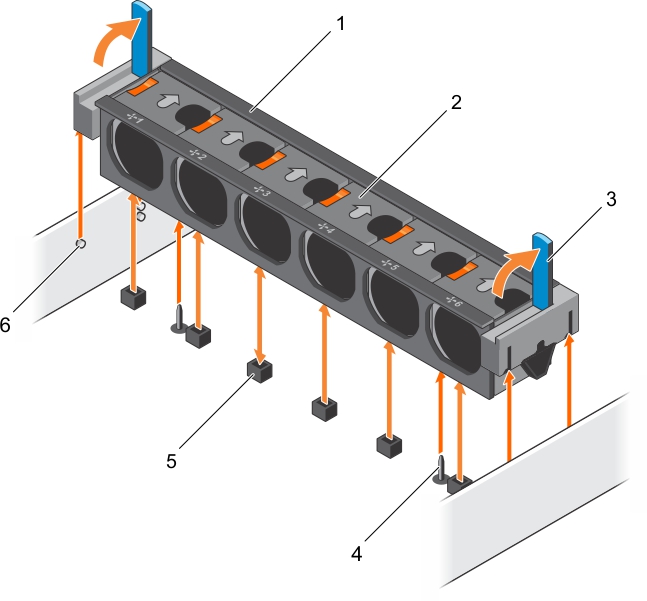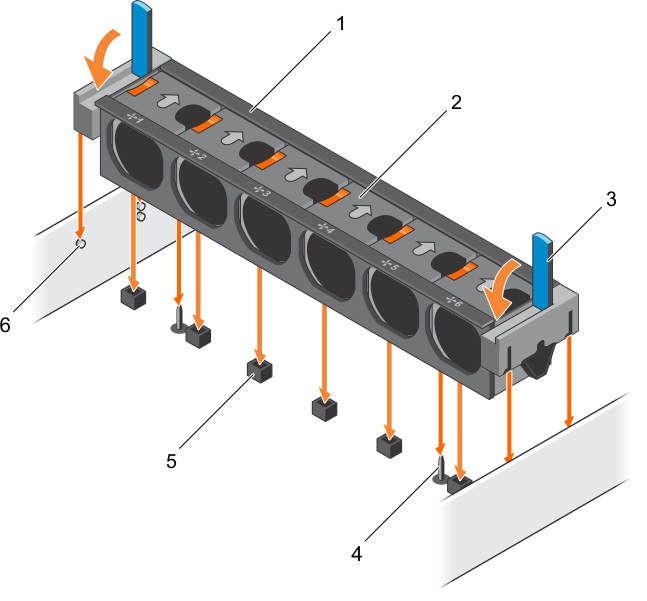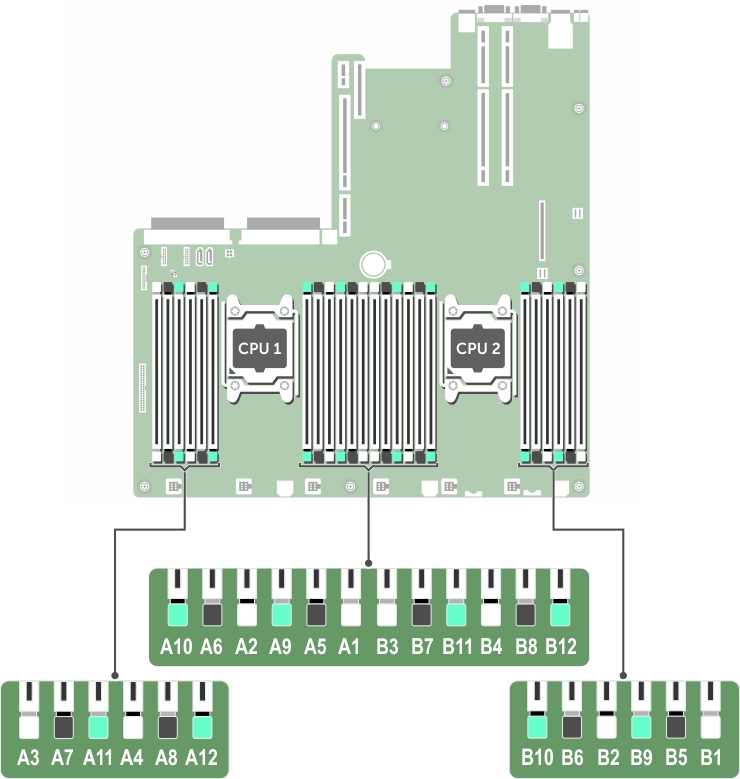Cooling-fan assembly
Removing the cooling fan assembly
Installing the cooling fan assembly
|
3. |
Follow the procedure listed in the After working inside your system section.
System memory
Your system supports DDR4 registered DIMMs (RDIMMs). System memory holds the instructions that are executed by the processor.
Figure 16. Memory socket locations
Memory channels are organized as follows:



